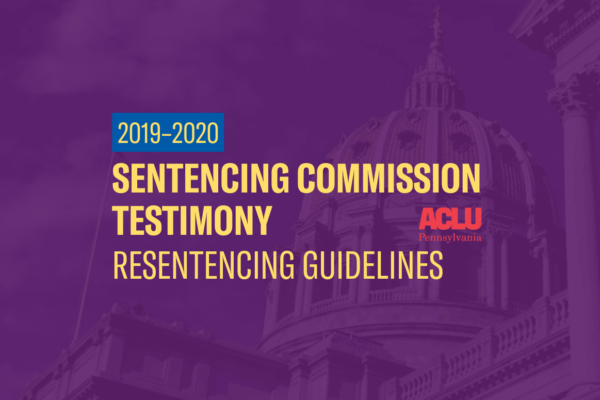It has been said that the definition of insanity is repeating the same action and expecting a different outcome. This week, the Pennsylvania Commission on Sentencing may be approaching their own brand of madness.
A decade ago, the Pennsylvania legislature passed a law mandating that the sentencing commission develop a risk assessment tool — a worksheet with the aim of helping judges determine whether an individual being sentenced to one crime would be likely to commit another crime in the future.
For ten years, the commission has time and again failed to fulfill this mandate. Just in the past fourteen months, the sentencing commission has brought forth plans for a risk assessment tool only to be met with opposition from policy experts, individuals impacted by mass incarceration, and many who have worked inside the system. Time and again, these proposals have failed.
With each new attempt to fulfill the mandate, the commission’s proposal becomes more Byzantine and more racially problematic.
With its latest plan, the commission has doubled down by offering the most confusing and complex proposal yet, a far cry from the decade-old mandate to simply create a worksheet.
The current plan on the table is still plagued by the racial biases that are baked into criminal justice data that a risk assessment tool would pull from.
The commission’s latest plan also keeps many of the problematic pieces of past proposals in place while creating a whole new level of unnecessary bureaucracy by implementing an additional, untested risk assessment tool and passing the buck to county probation offices when it comes to actually making the final assessment. Even those deemed “low-risk” by the sentencing judge would be passed to a probation officer for an additional assessment. Across the commonwealth probation offices are underfunded and overworked. Adding work to the already full plate of probation officers makes no sense.
Rep. Todd Stephens of Montgomery County, who is the vice chair of the commission, and some other members seem to think that the implementation of this risk assessment tool will somehow benefit individuals charged with crimes by leveling the playing field. This is fantasy.
The reality is, implementation of a risk assessment tool at sentencing will have a disproportionate impact on people of color. Pennsylvania counties rely on data points directly correlated to race, including zip code, associations with friends and family who have criminal records, education history, and employment status, among other factors. Even the question of whether someone receives public assistance or has “financial problems” scores as a risk factor.
Pennsylvania judges should have the authority to make individual, case-by-case assessments about future risk, not be limited by a one-size-fits-all risk assessment tool.
This farce has gone on long enough. The Pennsylvania legislature should repeal the mandate that the commission create a risk assessment tool. If the commission is to pass the latest proposal in a planned vote later this week, the legislature should register opposition before this policy is ever implemented.
It’s time for smart justice in Pennsylvania. The current proposal in front of the sentencing commission would move us further from that goal, instead of advancing us towards it. When it comes to criminal law, Pennsylvania is near the bottom when it comes to the racial disparities that plague the system. The proposal on the table would double down on these racial disparities and could deepen the mass incarceration crisis for another generation.
We can and must do better.
Take action to urge commission members to oppose the implementation of this risk assessment tool at sentencing: http://bit.ly/NoNewRAT.



